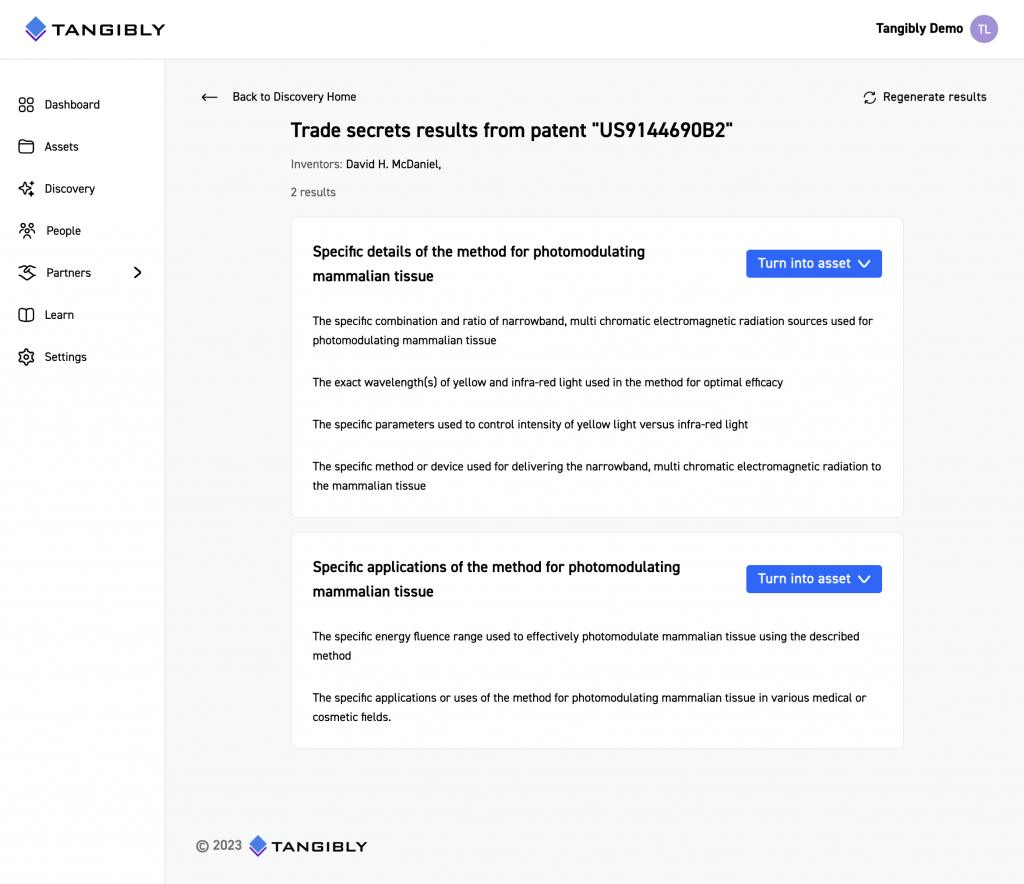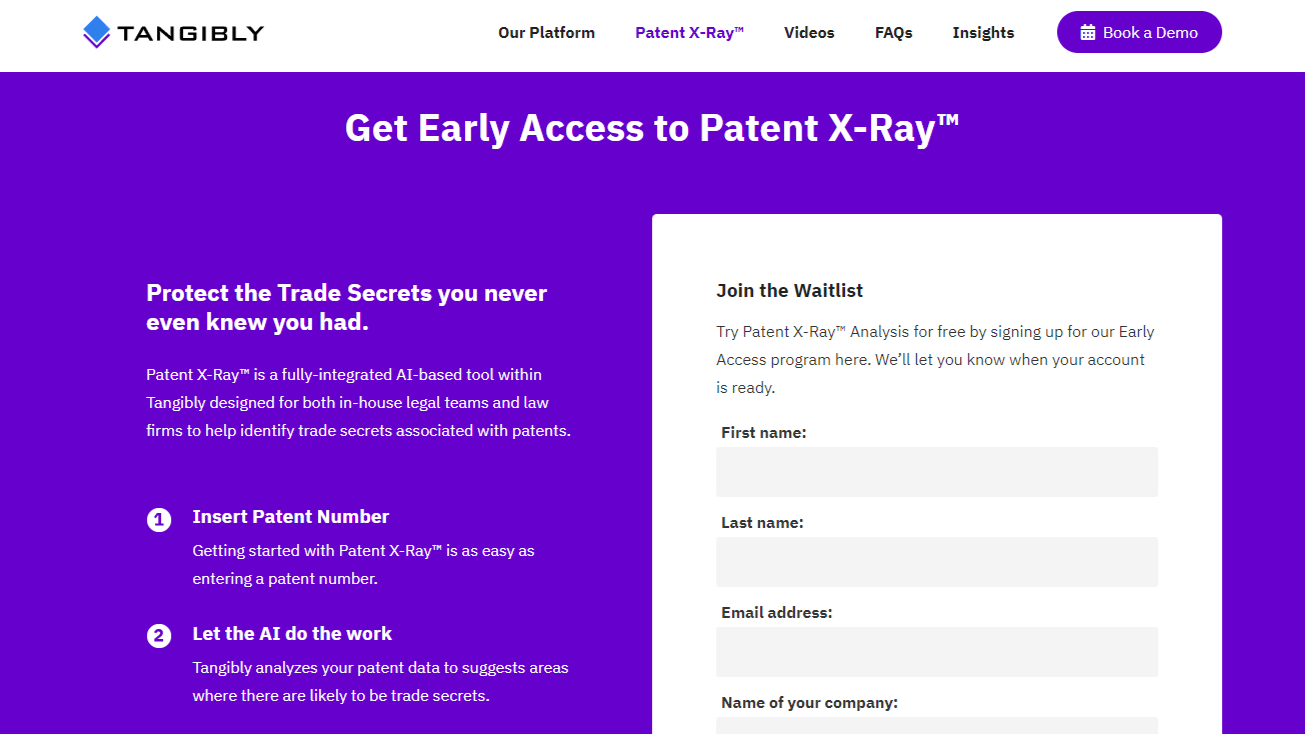It was just over a year ago that I wrote about the launch of Tangibly, the first platform devoted to helping companies systematically identify and catalog their trade secrets.
Now, Tangibly is introducing Patent X-Ray, a tool powered by large language model artificial intelligence to help companies identify possibly undocumented trade secrets from their own patents.
The tool, which is being offered on a limited early-access basis to inhouse legal teams and law firms, integrates with data from the U.S. Patent & Trademark Office.
On Friday, I was given a preview demonstration by Tim Londergan, Tangibly’s cofounder and CEO, and Liat Belinson, cofounder and chief technology officer.
 The user simply inputs a patent number to start the process, and Patent X-Ray produces descriptions of potential trade secrets, predicted based on Tangibly’s proprietary algorithm. It also predicts the importance of the trade secret and its vulnerability.
The user simply inputs a patent number to start the process, and Patent X-Ray produces descriptions of potential trade secrets, predicted based on Tangibly’s proprietary algorithm. It also predicts the importance of the trade secret and its vulnerability.
The user can edit or accept the suggestions and then automatically add them to the compliance and management workflow on Tangibly’s platform.
It also estimates the age of the trade secret and how many people have access to it. “We found an example yesterday of one where three of the five inventors are no longer at the company, and one of them works for a big competitor,” Londergan said.
“Interest in trade secrets has grown tremendously in the past couple years, yet most companies find it daunting to start identifying and documenting their trade secrets,” said Londergan. “Patent X-ray makes this process, which has taken hours or days in the past, into a simple near instantaneous experience and puts companies on the right path to managing their intellectual property within days.”
Tangibly has run a pilot of the tool with attorneys from DLA Piper in the United States and Italy, who have used it to help their clients identify and record their trade secrets.
“We are using Tangibly’s Patent X-Ray tool not only to help identify trade secrets in issued patents but also in abandoned patents,” said Ray Miller, partner at DLA Piper-US. “There is a huge benefit to knowing where the patented material stops and the trade secrets start, and Tangibly’s Patent X-Ray tool lets us see that dividing line more clearly.”
The early access program allows users to test the tool free f0r 30 days. After a period of testing and evaluating user feedback, Tangibly will decide when to release the product commercially.
Reduce Trade Secret Losses
When Tangibly launched in February 2022, it did so with the mission of helping businesses reduce losses from the theft of trade secrets by systematically inventorying them.
“There’s technology to protect nearly every other asset class, but there is still a major gap in tech for trade secrets,” Londergan said at the time. “By ensuring that every aspect of trade secrets is protected to the highest legal standard, companies of every size can now mitigate IP risk and protect their competitive edge.”
An early investor in Tangibly was Mark Britton, the former founder and CEO of Avvo, who said when it launched that he believes companies have a strong need for a product such as this.
“Every company I’ve worked with has the same problem: Brilliant teams coming up with brilliant ideas that they can’t patent,” Britton said. “Through regulatory filings, investments, partnerships, whatever, these ideas regularly spill into the public domain with no structure, no protection.”
Last August, Tangibly raised $1.3 million in pre-seed financing, in a round that saw prticipation from WS Investment Company (law firm Wilson Sonsini’s venture arm), Madrona Venture Group, and a number of seed funds, influential founders and angel investors that included Brainstorm Ventures, Incisive Ventures, PatentVest (an IP intelligence platform), and Family Angel Management Fund, as well as individual investors Jack Newton, founder and CEO of Clio, David Rosenberg, founder of MuleSoft, and Britton.
 Robert Ambrogi Blog
Robert Ambrogi Blog